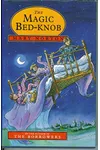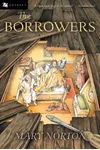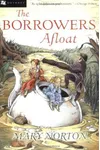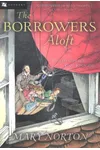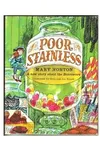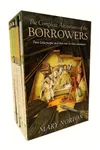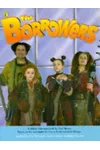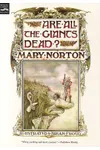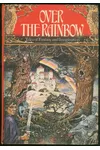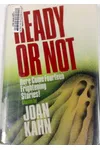Picture a British storyteller who spun tiny worlds of wonder from everyday nooks and crannies—meet Mary Norton! Born in 1903, this children’s author enchanted generations with her whimsical tales of miniature adventurers and magical mishaps. Best known for The Borrowers and Bedknob and Broomstick, Norton’s stories blend cozy charm with thrilling escapades, proving that even the smallest heroes can leave a big mark.
Her knack for finding magic in the ordinary—think teacups turned into Borrower furniture or a bedknob that whisks you through time—made her a beloved figure in children’s literature. Let’s dive into the life and legacy of this imaginative author whose stories still sparkle today.
The Making of Mary Norton
Kathleen Mary Pearson, later known as Mary Norton, was born on December 10, 1903, in London, England, and raised in a Georgian manor in Leighton Buzzard, Bedfordshire. The daughter of a physician, she grew up exploring the house’s hidden corners, which later inspired the secret world of The Borrowers. Her nearsightedness sharpened her focus on tiny details, fueling her imagination for miniature realms. After training as an actress with the Old Vic Shakespeare company, she married Robert Norton in 1926 and moved to Portugal, where they raised four children. World War II brought her to the United States, where she began writing, publishing her first book, The Magic Bed-Knob, in 1943.
Mary Norton’s Unforgettable Stories
Norton’s storytelling shines in her ability to weave fantasy into the familiar. Her most famous work, The Borrowers (1952), introduces the Clock family—Pod, Homily, and teenage Arrietty—six-inch-tall beings who live under floorboards, “borrowing” human items like pins and thimbles to survive. This low-fantasy series, spanning five novels, blends adventure with heartfelt themes of family and resilience, earning the 1952 Carnegie Medal. Its sequels, like The Borrowers Afield (1955) and The Borrowers Avenged (1982), follow the Clocks’ daring journeys beyond their cozy hideaways.
Equally enchanting is Bedknob and Broomstick, a combined edition of The Magic Bed-Knob (1943) and Bonfires and Broomsticks (1947). This tale follows three children and Miss Price, an amateur witch, whose enchanted bedknob sparks time-traveling adventures. Adapted into Disney’s 1971 film Bedknobs and Broomsticks, it showcases Norton’s playful humor and knack for magical chaos. Her writing style, rich with vivid details and gentle wit, invites readers to see the world through a child’s curious eyes, making everyday objects feel extraordinary.
Norton also penned lesser-known works like Are All the Giants Dead? (1975), a fairy-tale-inspired adventure, and The Bread and Butter Stories (1998), a collection of adult short stories. Her ability to craft immersive, character-driven narratives across genres cemented her as a versatile storyteller.
Why Mary Norton Matters
Mary Norton’s stories have left an indelible mark on children’s literature, inspiring readers to find magic in the mundane. The Borrowers has been adapted into films, TV series, and even a 2010 Studio Ghibli anime, The Secret World of Arrietty, proving its timeless appeal. Her focus on small, resilient characters resonates with audiences, offering a lens on human struggles through a fantastical perspective. Norton’s Carnegie Medal and her inclusion in the 2007 top ten Medal-winning works highlight her literary significance.
Beyond awards, Norton’s legacy lies in her ability to spark imagination. Her stories encourage readers to look closer—at the cracks in floorboards or the knobs on bedposts—and wonder what adventures might be hiding there. Her influence endures in modern fantasy, inspiring authors who craft hidden worlds within our own.
- Born: December 10, 1903, London, England
- Key Works: The Borrowers, Bedknob and Broomstick, Are All the Giants Dead?
- Awards: 1952 Carnegie Medal for The Borrowers
- Died: August 29, 1992, Hartland, Devon, England
Snag The Borrowers or Bedknob and Broomstick and dive into Mary Norton’s whimsical world of tiny heroes and magical adventures!
